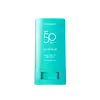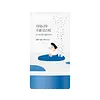What's inside
What's inside
 Key Ingredients
Key Ingredients

 Benefits
Benefits

 Concerns
Concerns

 Ingredients Side-by-side
Ingredients Side-by-side

C12-15 Alkyl Benzoate
AntimicrobialOctocrylene
UV AbsorberHomosalate
Skin ConditioningSilica
AbrasiveBis-Ethylhexyloxyphenol Methoxyphenyl Triazine
Skin ConditioningPolyethylene
AbrasiveTribehenin
EmollientDimethicone/Vinyl Dimethicone Crosspolymer
Skin ConditioningIsohexadecane
EmollientEthylhexyl PCA
HumectantMea-Salicylate
PreservativeButyl Methoxydibenzoylmethane
UV AbsorberButyloctyl Salicylate
Skin ConditioningDimethicone
EmollientPolymethyl Methacrylate
Phenoxyethanol
PreservativeTocopheryl Acetate
AntioxidantEthylhexylglycerin
Skin ConditioningTocopherol
AntioxidantParfum
MaskingC12-15 Alkyl Benzoate, Octocrylene, Homosalate, Silica, Bis-Ethylhexyloxyphenol Methoxyphenyl Triazine, Polyethylene, Tribehenin, Dimethicone/Vinyl Dimethicone Crosspolymer, Isohexadecane, Ethylhexyl PCA, Mea-Salicylate, Butyl Methoxydibenzoylmethane, Butyloctyl Salicylate, Dimethicone, Polymethyl Methacrylate, Phenoxyethanol, Tocopheryl Acetate, Ethylhexylglycerin, Tocopherol, Parfum
Water
Skin ConditioningCoco-Caprylate/Caprate
EmollientDibutyl Adipate
EmollientSynthetic Wax
AbrasiveButyloctyl Salicylate
Skin ConditioningDiethylamino Hydroxybenzoyl Hexyl Benzoate
UV FilterVinyl Dimethicone/Methicone Silsesquioxane Crosspolymer
Butylene Glycol
HumectantEthylhexyl Triazone
UV AbsorberOzokerite
Emulsion StabilisingNiacinamide
SmoothingVinyldimethicone
Polysilicone-15
UV FilterBis-Ethylhexyloxyphenol Methoxyphenyl Triazine
Skin ConditioningBetula Platyphylla Japonica Juice
Skin ConditioningGlyceryl Glucoside
HumectantGlycerin
HumectantLaminaria Japonica Extract
Skin ProtectingUlmus Davidiana Root Extract
Skin ConditioningAloe Barbadensis Leaf Extract
EmollientViola Mandshurica Flower Extract
AntioxidantDioscorea Japonica Root Extract
Skin ConditioningHyaluronic Acid
HumectantAscorbic Acid
AntioxidantSodium Hyaluronate
HumectantPortulaca Oleracea Extract
Skin ConditioningDipotassium Glycyrrhizate
HumectantAllantoin
Skin ConditioningNonapeptide-1
Skin ConditioningDipeptide Diaminobutyroyl Benzylamide Diacetate
Skin ConditioningAcetyl Hexapeptide-8
HumectantCopper Tripeptide-1
Skin ConditioningTripeptide-1
Skin ConditioningPalmitoyl Tetrapeptide-7
Skin ConditioningPalmitoyl Tripeptide-1
Skin ConditioningPalmitoyl Tripeptide-5
Skin ConditioningPalmitoyl Pentapeptide-4
Skin ConditioningPalmitoyl Hexapeptide-12
Skin ConditioningPentapeptide-3
Skin ConditioningHexapeptide-9
Skin ConditioningAdenosine
Skin ConditioningEthylhexylglycerin
Skin ConditioningPolyglyceryl-5 Polyricinoleate
EmulsifyingGlyceryl Caprylate
EmollientCaprylyl Glycol
EmollientOryza Sativa Bran Oil
EmollientLauryl Polyglyceryl-3 Polydimethylsiloxyethyl Dimethicone
Skin ConditioningPolyglyceryl-4 Diisostearate/Polyhydroxystearate/Sebacate
EmulsifyingSodium Chloride
Masking1,2-Hexanediol
Skin ConditioningTocopherol
AntioxidantWater, Coco-Caprylate/Caprate, Dibutyl Adipate, Synthetic Wax, Butyloctyl Salicylate, Diethylamino Hydroxybenzoyl Hexyl Benzoate, Vinyl Dimethicone/Methicone Silsesquioxane Crosspolymer, Butylene Glycol, Ethylhexyl Triazone, Ozokerite, Niacinamide, Vinyldimethicone, Polysilicone-15, Bis-Ethylhexyloxyphenol Methoxyphenyl Triazine, Betula Platyphylla Japonica Juice, Glyceryl Glucoside, Glycerin, Laminaria Japonica Extract, Ulmus Davidiana Root Extract, Aloe Barbadensis Leaf Extract, Viola Mandshurica Flower Extract, Dioscorea Japonica Root Extract, Hyaluronic Acid, Ascorbic Acid, Sodium Hyaluronate, Portulaca Oleracea Extract, Dipotassium Glycyrrhizate, Allantoin, Nonapeptide-1, Dipeptide Diaminobutyroyl Benzylamide Diacetate, Acetyl Hexapeptide-8, Copper Tripeptide-1, Tripeptide-1, Palmitoyl Tetrapeptide-7, Palmitoyl Tripeptide-1, Palmitoyl Tripeptide-5, Palmitoyl Pentapeptide-4, Palmitoyl Hexapeptide-12, Pentapeptide-3, Hexapeptide-9, Adenosine, Ethylhexylglycerin, Polyglyceryl-5 Polyricinoleate, Glyceryl Caprylate, Caprylyl Glycol, Oryza Sativa Bran Oil, Lauryl Polyglyceryl-3 Polydimethylsiloxyethyl Dimethicone, Polyglyceryl-4 Diisostearate/Polyhydroxystearate/Sebacate, Sodium Chloride, 1,2-Hexanediol, Tocopherol
 Reviews
Reviews

Ingredients Explained
These ingredients are found in both products.
Ingredients higher up in an ingredient list are typically present in a larger amount.
You might know this ingredient as Tinosorb S or Bemotrizinol. It is a UV filter that covers both UVA and UVB rays.
This ingredient has two peak UV absorption peaks ( 310 and 340 nm) and is able to absorb both UV-A and UV-B rays. This ingredient works by preventing UV rays from reaching and damaging your skin.
On top of that - it is highly photostable and helps prevent the photodegration of other sunscreen ingredients such as avobenzone.
Tinosorb S is allowed in the EU, Australia, and Asia. It is close to being approved by the FDA and we'll hopefully get this ingredient in the U.S. by late 2025.
Fun fact: Tinosorb S is the most effective UV absorber at maximum concentration (measured by SPF) permitted in the EU.
This ingredient is oil-soluble, so your oil-cleansers will take this right off at night.
Learn more about Bis-Ethylhexyloxyphenol Methoxyphenyl TriazineButyloctyl Salicylate is a chemical UV filter structurally similar to octisalate. It is a photostabilizer, SPF booster, emollient and solvent. This ingredient helps evenly spread out ingredients.
According to a manufacturer, it is suitable for pairing with micro Titanium Dioxide, Zinc Oxide, and pigments.
Photostabilizers help stabilize UV-filters and prevents them from degrading quickly.
Learn more about Butyloctyl SalicylateEthylhexylglycerin (we can't pronounce this either) is commonly used as a preservative and skin softener. It is derived from glyceryl.
You might see Ethylhexylglycerin often paired with other preservatives such as phenoxyethanol. Ethylhexylglycerin has been found to increase the effectiveness of these other preservatives.
Tocopherol (also known as Vitamin E) is a common antioxidant used to help protect the skin from free-radicals and strengthen the skin barrier. It's also fat soluble - this means our skin is great at absorbing it.
Vitamin E also helps keep your natural skin lipids healthy. Your lipid skin barrier naturally consists of lipids, ceramides, and fatty acids. Vitamin E offers extra protection for your skin’s lipid barrier, keeping your skin healthy and nourished.
Another benefit is a bit of UV protection. Vitamin E helps reduce the damage caused by UVB rays. (It should not replace your sunscreen). Combining it with Vitamin C can decrease sunburned cells and hyperpigmentation after UV exposure.
You might have noticed Vitamin E + C often paired together. This is because it is great at stabilizing Vitamin C. Using the two together helps increase the effectiveness of both ingredients.
There are often claims that Vitamin E can reduce/prevent scarring, but these claims haven't been confirmed by scientific research.
Learn more about Tocopherol